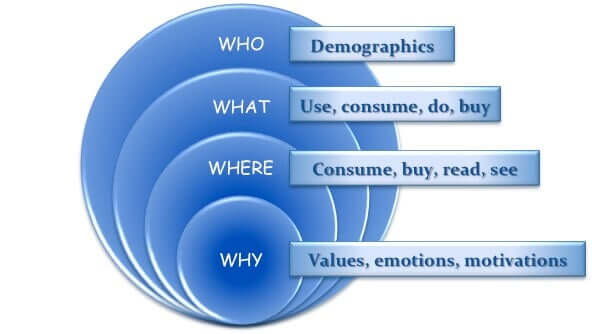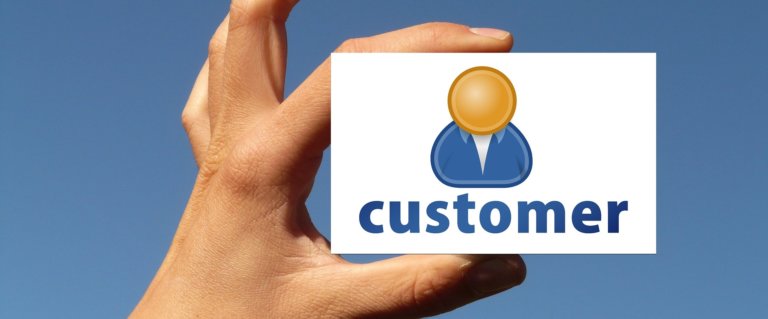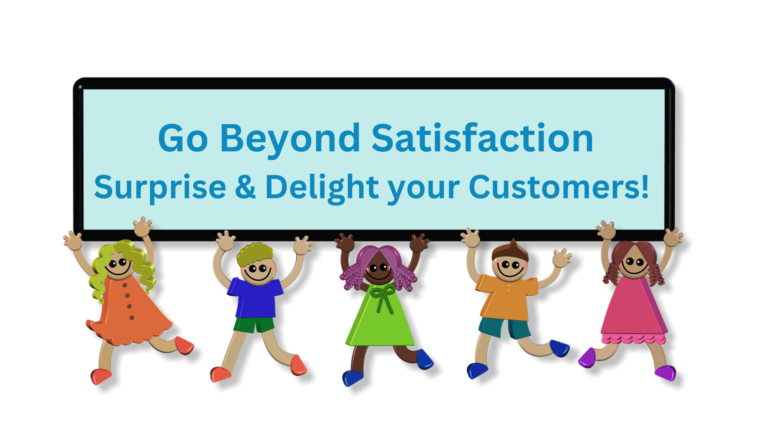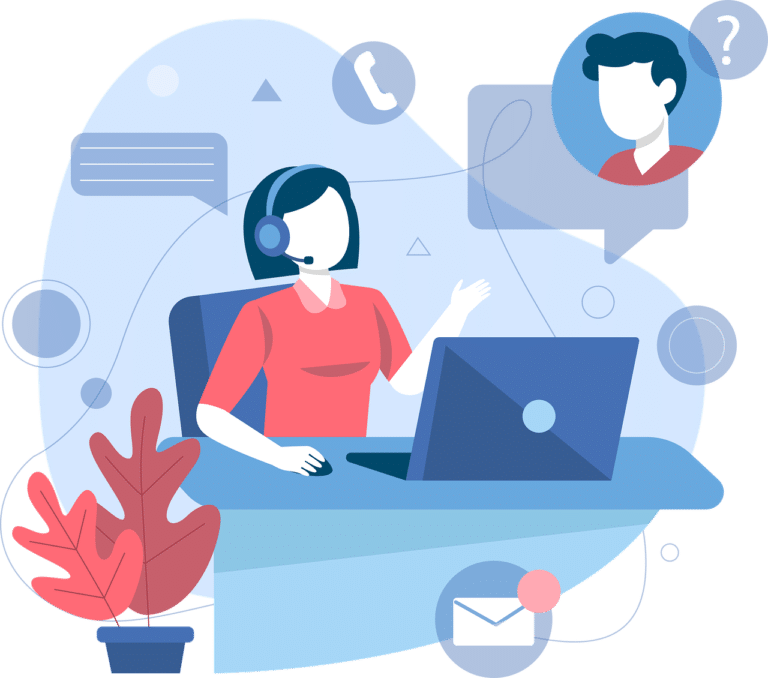I think it’s pretty clear to everyone in business that NOT knowing your target customer costs a lot – sometimes the business itself! (Think Kodak, Nokia, Borders)
So let me ask you this; how well do you really know your own target customers? Are they men, women, younger, older, Fortune 100 companies, local businesses? If you can at least answer that, then you have the basics, but how much more should you know about them?
Well I can help you there, with these 12 essential elements of a customer persona or avatar.
Background
I was recently working with a local service provider that was looking to improve their online presence. They were keen to have more impact on social media and had asked for advice about the best platforms, optimal frequency of publishing and possible content ideas.
They are a new client for me, so I think they were a little surprised when I didn’t get straight into the “sexy” topic of social media. Instead, I started by taking them through the basics of target customer identification. Lucky for them that I did!
When we had finished the exercise, we had actually found five different targets for them to address, rather than just the two they had been addressing until now. This clearly would have an impact on both where, what and how they communicated online.
It is for this reason that I always recommend that every brand and business completes a target persona and regularly updates it every time they learn something new about their customers. I also encourage you to keep it handy, ideally always visible on or around your desk. That way you will always be thinking customer first whenever you are working on a new project.
So let’s imagine that we’re having our first meeting together and I’m asking a few (well 12 actually!) questions about your customers. How many can you immediately answer?
The 12 Essential Elements of a Target Customer Persona
C3Centricity has designed a simple template that helps clients have all the essential information about their customers in one place, summarised on one page. It’s called the 4W™ Persona Template; if you haven’t already done so, you can download it, together with a detailed workbook explaining exactly how to complete it. Just click on the image below.
I would highly recommend you download it right now, before continuing to read, so that you can follow along with the one-pager in front of you.
Here are the 12 essential elements you need to have at hand in order to complete the template:

1. WHO – DEMOGRAPHICS: This is usually a “no-brainer” and is how most organisations describe their customers. However it’s not really original and definitely not competitive, although they are an essential foundation.
But there is so much more you should and absolutely must know about your customers, so read on.
2. WHAT THEY USE: Whether you are offering a product or providing a service, you need to know what your customers are currently using. And not only for your category, but in adjacent categories too.
In some categories, customers can replace a brand by another in a different category. Think about food or beverages. A customer could replace a cola by a still fruit drink, or a pasta dish by a pie. You therefore need to understand what your customers would use, if anything, when your product or category is unavailable.
3. WHAT THEY CONSUME: Here we need to understand what types of information and media your customers are consuming. What do they read, watch, listen to, both in work and in their spare time?
Which social media platforms do they use, and what websites do they consult on a regular basis? Which are their favourite influencers, the companies, brands or people that they follow online?
4. WHAT THEY DO: How do your customers spend their time? What type of lifestyle do they have? What are their hobbies? What do they do all day, and in the evening, and at weekends?
It would be ideal if you can create a detailed timeline of their average day, so you have a feel for their moments of stress, boredom or relaxation. This makes it much easier to see how your brand might fit into their lives.
5. WHAT THEY BUY: This is where you describe their current category purchasing habits. How frequently and what quantity do they buy? Are they loyal to your brand or do have a portfolio of brands from which they choose?
Do they have regular daily, weekly or monthly buying habits? Do they do research before buying or repurchasing? Do they compare and if so how, where, and why?
6. WHERE THEY CONSUME: Is the category consumed in home, in work, during leisure activities? Is it used locally, regionally or is it more used on vacation?
Are your customer with friends, with their partner, with colleagues when they consume the brand? Are there certain surroundings more conducive to consumption? If so, what makes it so?
7. WHERE THEY BUY: Do your target customers have certain places and times when they tend to buy? Is it an habitual or impulse purchase? Is it seasonal? Are they buying at a certain place at certain times of the day, as they go about their daily lives?
Are there only a certain number or style of outlets where your brand is available, or can your customers buy it wherever they are? Do you limit distribution to particular retail types, like supermarkets, specialty stores, or professional service stores? Are they the same ones your customers frequent? And what about the category in general? Do some brands limit distribution?
8. WHERE THEY READ/WATCH/HEAR: From where do your customers get information about the products and services they consumer? Is it from manufacturers, from friends, their family or their colleagues?
Do they access it online, in print, on radio or via TV? Are your customers at home, in work or on the road?
Remember that today “read” covers not just traditional media but new media as well. Which websites, social media channels and people do they follow, like, listen to and value the opinion of?
9. WHERE THEY SEE: One reason to target a specific group of customers is so that you can better and more effectively communicate with them. Where are they most likely to be open to receiving your messages? What media, at what times, on which days?
Do they use different media for different purposes? For example, do they review websites in work for information, then look at other sites in the evenings and at weekends for entertainment? How does this difference impact your brand?
10. WHY VALUES: What values do your customers have that you are addressing with your product or service, and which explain why they are using your brand rather than another? Do they have other values that are not currently being addressed, either by you or your competitors?
If so, could they be highlighted in communications to attract more customers? In other words, do these values offer the possibility of a differentiated communications platform or even product / service concept? What resonates with them in particular about the category, your brand, your competitors’ brands?
11. WHY EMOTIONS: What is the emotional state of your customers when they are considering a purchase or use, both of the category and your brand?
Clearly identified emotional states enable you to more easily resonate with your customers through empathising with their current situation. You are also more likely to propose a solution that will satisfy their need or desire when their emotional state is precisely as you have identified.
12. WHY MOTIVATIONS: What motivates the customer to consider, buy and use the category and their brand choice? Emotions and motivations are closely linked, both to each other and to the customer’s need state.
By identifying the need-state you want to address, you will be better able to understand your customers and increase the resonance of your communications with them.
Final recommendations
If you can answer all twelve of these questions in detail, then you certainly know your customers intimately. But I have a word of warning before you sit back and relax on your laurels.
Remember that people are constantly changing and what satisfies them today, is unlikely to satisfy them tomorrow. Therefore you need to keep track on all four layers of your customer description, to stay ahead of the competition, as well as to satisfy and hopefully delight your customers just as much going forward.
As already mentioned at the start of this article, by completing a detailed description of their target audience for my client, we were able to identify a couple of new segments that their services could address. Although their demographics were similar, their emotional and need states were quite different. This gave us the opportunity to successfully respond with slightly different service offerings for each group.
The 4W™ Persona Template is one of the best ways to develop an avatar or persona for your brand. Our clients love it, so I know you will too. It can be downloaded together with a detailed workbook explaining how to complete it, by clicking the button below.







